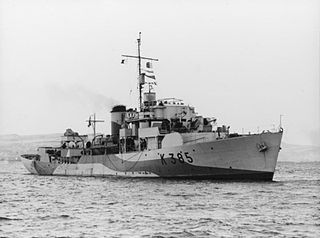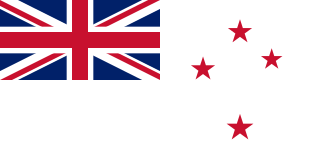
HMAS Echuca (J252/M252), named for the town of Echuca, Victoria, was one of 60 Bathurst-class corvettes constructed during World War II, and one of 36 initially manned and commissioned by the Royal Australian Navy (RAN).

HMAS Inverell, named for the town of Inverell, New South Wales, was one of 60 Bathurst-class corvettes constructed during World War II, and one of 36 initially manned and commissioned solely by the Royal Australian Navy (RAN).

HMAS Kiama, named for the coastal town of Kiama, New South Wales, was one of 60 Bathurst-class corvettes constructed during World War II, and one of 36 initially manned and commissioned solely by the Royal Australian Navy (RAN).

HMAS Stawell (J348/M348) was a Bathurst-class corvette named for the town of Stawell, Victoria. Sixty Bathurst-class corvettes were constructed during World War II, and Stawell was one of 36 initially manned and commissioned solely by the Royal Australian Navy (RAN).

Henry Robb, Limited, known colloquially as Robbs, was a Scottish shipbuilding company based at Leith Docks in Edinburgh. Robbs was notable for building small-to-medium sized vessels, particularly tugs and dredgers.
HMNZS Tui, formerly USNS Charles H. Davis (T-AGOR-5), was one of nine Conrad class oceanographic ships built for the United States Navy (USN), that later saw service in the Royal New Zealand Navy (RNZN). Serving with the USN from 1963 to 1970, these ships were designed to perform acoustic experiments on sound transmission underwater, and for gravity, magnetism and deep-ocean floor studies.

HMNZS Wakakura (P3555) was a Moa-class inshore patrol vessel of the Royal New Zealand Navy. It was commissioned in March 1985 for the Naval Volunteer Reserve.
HMNZS Pukaki was a Lake-class inshore patrol vessel of the Royal New Zealand Navy. Pukaki commissioned in 1975, deleted in 1991 and sold as a private launch.

HMNZS Wakakura (T00) was originally a First World War Castle-class naval trawler built in Canada. Ordered by the Admiralty, the vessel, named TR 1, was loaned to the Royal Canadian Navy for use on the East Coast of Canada. She was purchased by New Zealand in 1926 and transferred to the Royal New Zealand Navy when it was established in 1941.

HMNZS Arabis was a modified Flower-class corvette of the Royal New Zealand Navy (RNZN). Built for the British Royal Navy as HMS Arabis, she was transferred to the RNZN on completion. She was commissioned in 1944 and decommissioned in 1948.

Coastal Forces was a division of the Royal Navy established during World War II. It consisted of small coastal defence craft such as motor launches, submarine chasers, air-sea rescue launches, motor gun boats and motor torpedo boats. It did not include minesweepers, naval trawlers or landing craft. This article is about the equivalent boats used in the Royal New Zealand Navy (RNZN).
The Bird-class minesweeper was a class of naval trawlers built for the Royal New Zealand Navy and which served during the Second World War. A total of three vessels in the class were built: Kiwi, Moa and Tui. All were named for New Zealand native birds and were also referred to as corvettes.

HMNZS Tui (T234) was a Bird-class minesweeper of the Royal New Zealand Navy. She was commissioned in 1941 for minesweeping and anti-submarine roles. Tui was the first of two ships with this name to serve in the Royal New Zealand Navy and was named after a native bird from New Zealand.
HMNZS Moa (T233) was a Bird-class minesweeper of the Royal New Zealand Navy (RNZN) that served during World War II.

Commissioned minesweepers and danlayers of the Royal New Zealand Navy (RNZN) from its formation on 1 October 1941 to the present. The RNZN was created two years into World War II. For coherence this article covers the war years from the start, and thus includes also the New Zealand minesweepers operating from the beginning of the war.

Vice Admiral Sir Peter Phipps, was a senior officer of the Royal New Zealand Navy (RNZN) from the 1940s to 1960s.
HMNZS Santon (M1178) was a Ton-class minesweeper that operated in the Royal Navy, the Royal New Zealand Navy (RNZN), and the Argentine Navy. Built for the Royal Navy by Fleetlands Shipyard of Portsmouth, the minesweeper was launched on 18 August 1955 and commissioned as HMS Santon. She was named after a small village in North Lincolnshire. The minesweeper was commissioned in the RNZN from 1965 to 1966, when she was returned to the United Kingdom. She was later transferred to the Argentine Navy, and operated as ARA Chubut (M3).
HMNZS Hickleton (M1131) was a Ton-class minesweeper that operated in the Royal Navy and the Royal New Zealand Navy (RNZN). She was named after a small village near Doncaster.

Commander Gordon Bridson, was a New Zealand swimmer who won two silver medals at the 1930 British Empire Games. He was also in the New Zealand Royal Naval Volunteer Reserve and in the Second World War, he served in the Royal New Zealand Navy. Seconded to the Royal Navy in 1940, he commanded a minesweeper vessel that accompanied coastal convoys along the English Channel. He was later the commander of the minesweeper HMNZS Kiwi which, with her sister ship Moa, sunk the Japanese submarine I-1 off Guadalcanal in the Solomon Islands.

HMNZS Aroha was one of eight steel New Zealand-built Castle-class ships built and commissioned by the Royal New Zealand Navy during World War II. She was the first steel Castle-class trawler launched for the Royal New Zealand Navy.












